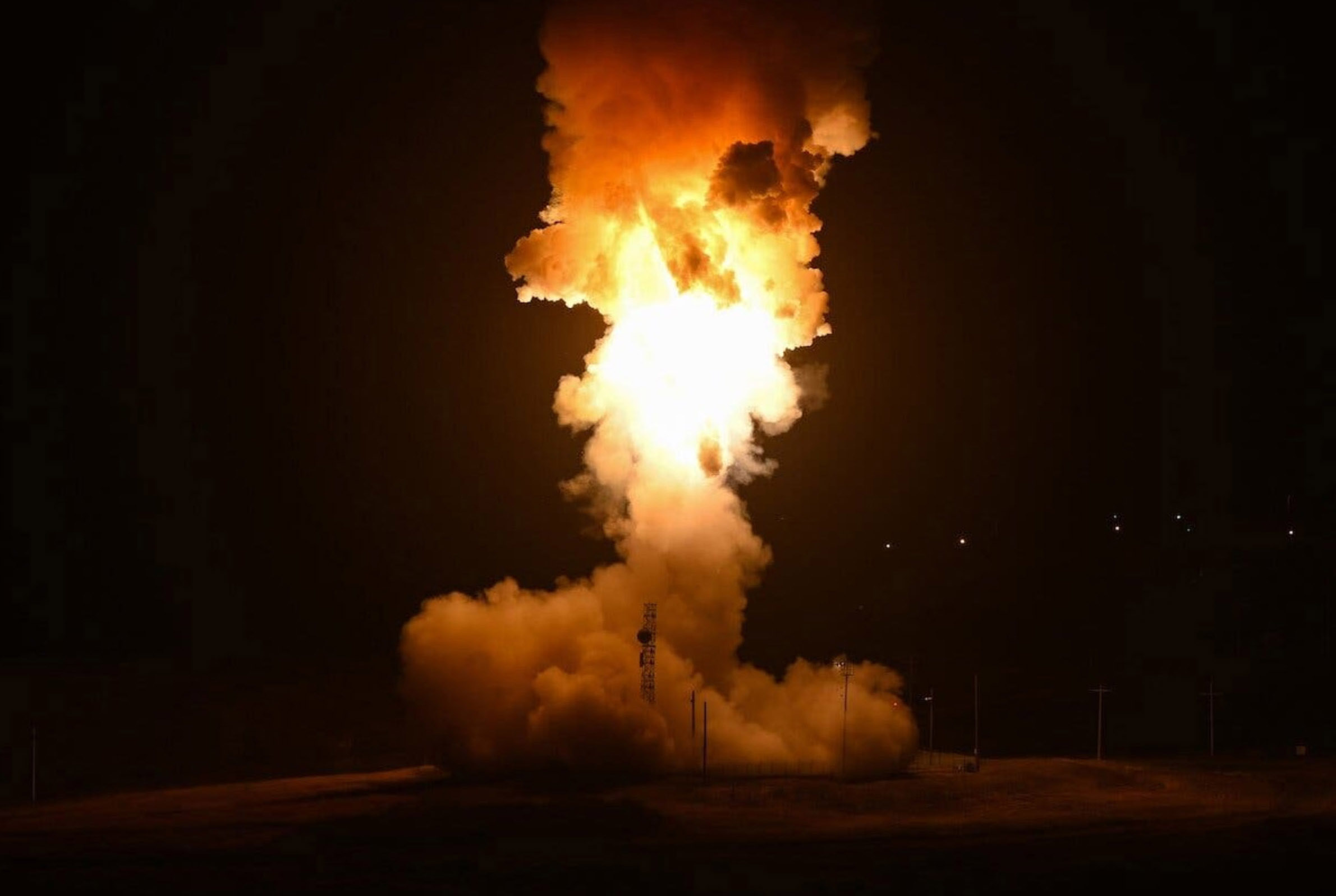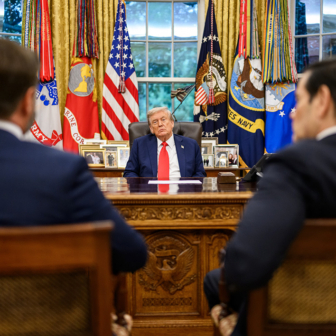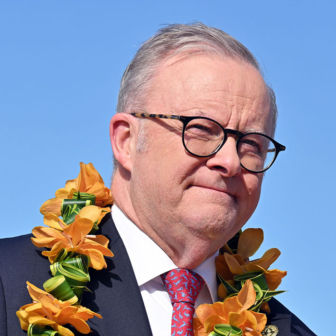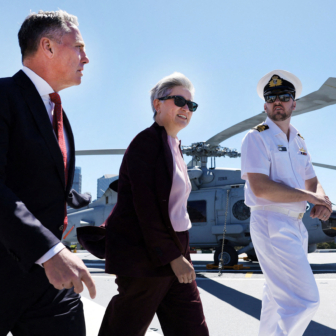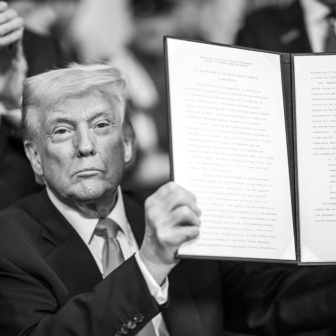Last week Donald Trump used social media to make a splash. Nothing unusual about that, except that this time the American president was announcing his country would resume testing nuclear weapons. When the initial hubbub settled, however, experts noted how the president’s statement was marked by half-truths, boastfulness and ambiguity. Surely the president didn’t want to end America’s 1992 test moratorium and take us back to something like the dark days of the cold war, with its tit-for-tat nuclear test explosions fuelling a menacing nuclear arms race?
Historically, the tests were meant to do two things: ensure readiness for a third world war and signal toughness. These elements were brought together in the idea of deterrence. Tests demonstrated a capacity and willingness to prevent Armageddon by means of a balance of terror.
As a result, more than 2000 nuclear explosives were detonated, about half by the US and most of the rest by the Soviet Union, France, Britain and China. The biggest test, by the Soviet Union in 1961, was roughly fifty megatons, approximately 3000 times more powerful than the Hiroshima bomb.
The end of the cold war went a long way towards stopping the folly, notwithstanding a few reckless tests by India, Pakistan and North Korea. By the end of the 1990s it was widely accepted that testing was environmentally risky and so dangerous for international security that it should be prohibited. At least for established players, testing also seemed unnecessary given the calmer global setting, the amount of overkill in the system, the masses of test data already collected, and advances in computer modelling.
So it wasn’t surprising that the 1996 Comprehensive Test Ban Treaty soon gathered more than 100 signatory countries. But it never came into legal effect.
For that, there was plenty of blame to go around, especially in Delhi, Islamabad and Pyongyang. Washington, initially supportive of the treaty, also ended up being a spoiler. In 2008, for example, it was the only member of the UN to vote against the treaty’s entry into force (168 voted in favour, and three abstained). Times had changed, with George W. Bush’s Republican administration opposing constraints on US freedom of manoeuvre by global institutions.
Since then, despite keeping its nuclear powder dry, Washington has kept its distance from the test ban treaty. Even Democratic administrations have held back, constrained by a sceptical congress and stringent conditions for treaty ratification that give a minority of senators considerable blocking power.
Today, the most dangerous drivers of nuclear strategy are persistent regional rivalries. The main concerns are: (a) Russia’s ambitions in Eastern Europe; (b) China’s territorial claims on Taiwan, the South China Sea and some Japanese islands; (c) the Korean peninsula; and (d) the India–Pakistan feud. Overlaying this is US–Russian–Chinese great power rivalry.
And, of course, we must now include the Trump factor. While liking to present as a master of political chess, Trump doesn’t have a traditional approach to statecraft or a Kissinger-type handle on world and military affairs. He often seems moved more by whim and ego. So, what are we to make of his announcement? Here are three possible explanations.
First, we must consider Trump’s tendency to bloviate. Maybe last week’s statement was essentially theatrical, empty of substance.
This overlaps with a second possible explanation. Perhaps Trump didn’t fully understand what he was saying. Some well-informed critics have been scathing about his imprecision. Hans Kristensen from the Bulletin of the Atomic Scientists says, “It’s hard to know what he means. As usual, he’s unclear, all over the map, and wrong.” Trump’s attempts to clarify the situation have been confusing. Even his officials seem unsure, with nuclear weapons expert Jeffrey Lewis claiming, “they are just making this up as they go along.”
Scrambling to catch up a few days later, energy secretary Chris Wright suggested Trump meant conducting a round of non-nuclear explosions, presumably to test the viability of nuclear weapons. Maybe the line between what the US weapons establishment calls “subcritical experiments” (for instance, assessing the impact of high explosives on nuclear material) and what is commonly understood as a nuclear test might have been lost on Trump in his social media moment.
There’s also a good chance Trump meant testing “delivery systems” — the bombers, submarines, and missiles capable of carrying nuclear warheads — rather than testing the warheads themselves. This would fit his idea of matching Russian and Chinese modernisation programs. But the US already tests these delivery vehicles as a matter of routine. In September, for example, the US Navy test-fired four nuclear-capable (but unarmed) Trident missiles as part of a longstanding program.
A third possible explanation is that Trump is not as muddled as critics believe and is indeed set on resuming nuclear test explosions. Why would he do that? Arguments in favour of tests include enhancing warhead safety, confirming stockpile reliability and facilitating the on-going generational modernisation of America’s nuclear deterrent by better fine-tuning new warheads. Critics suggest testing would also fit well with Project 2025, the hardline conservative blueprint that calls (among many other things) for a much-expanded nuclear weapons program.
It’s difficult to assess Trump’s policies without reference to his personality. Historically, nuclear tests often had a dramatic element to them, and Trump is nothing if not performative. This is not a trivial matter. Former Trump cabinet picks including defense secretaries Jim Mattis and Mark Esper, secretary of state Rex Tillerson, chief of staff John F. Kelly and national security adviser John Bolton have presented an unflattering picture of an immature and impulsive POTUS. Some of Trump’s public statements and numerous social media posts appear to confirm the judgement.
Understanding the man and his policies requires a psychologist as much as it does a strategic analyst. Here is a world leader who has worried about perceptions of his hand size and has boasted about the bigness of his nuclear button. Adding to the psychodrama is the tagging of Trump with the TACO meme (“Trump always chickens out”). Although it originated with his erratic tariff policy, the meme perhaps plays on his mind in other areas. Countering the TACO jibe might help explain the US attack on Iran, for instance. God forbid if it also edges Trump towards a nuclear test.
The whole testing business might simply fizzle out, of course — and there are good reasons for it to do so. Most experts believe the political and strategic costs of new American tests would outweigh the marginal technical gains. (Indeed, China might benefit significantly more from a collapse of the de facto ban because it possesses less historical test data and is expanding its arsenal more than any other country.)
Another reason for Washington to back off is that a new round of tests would worsen global and regional arms-racing. Moscow has already signalled a readiness to counter-test — to take “appropriate retaliatory steps,” in Vladimir Putin’s words this week — and the knock-on effects could easily spread to China, then India, then Pakistan.
US testing could also increase pressure on the nuclear weapons non-proliferation regime. Turbulent American leadership and Trump’s ambivalence, sometimes even hostility, towards allies provides a worrying context. If current concerns about the robustness of alliances are compounded by US nuclear test explosions reciprocated by Russia and China, it could spur vulnerable countries to acquire independent deterrents. The most often mentioned candidates here are Taiwan, Japan and South Korea, but perhaps others, such as Poland, might join the list.
It’s also easy to imagine tests intensifying global anti-Trump antagonism and perhaps anti-Americanism. The prospect must give the US state department nightmares. Old-timers will recall when NATO nuclear modernisation in the early 1980s boosted the anti-Reagan peace movement and threatened the political foundations of the Western alliance.
Trump’s loose wording, frequently cavalier attitude and tendency to bluster make it tempting to discount his declarations as background noise. With his pronouncements giving plenty of wriggle-room, only time will tell if his reflections on nuclear tests amount to anything.
The question now is whether anyone in Trump’s circle has the authority to impress on him that a resumption of nuclear explosive tests would likely spark a train of unintended consequences contrary to US national interests and global order. •
